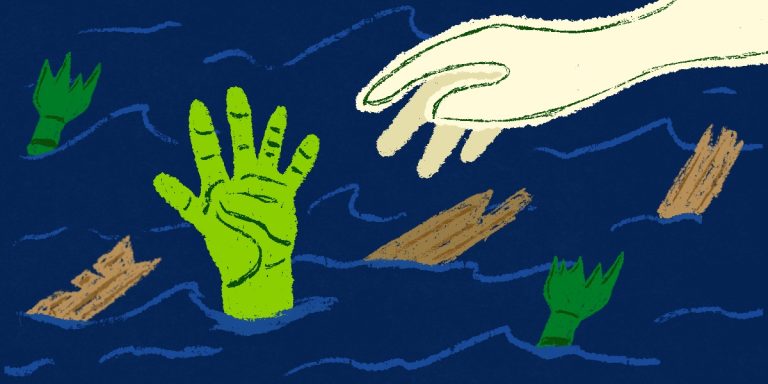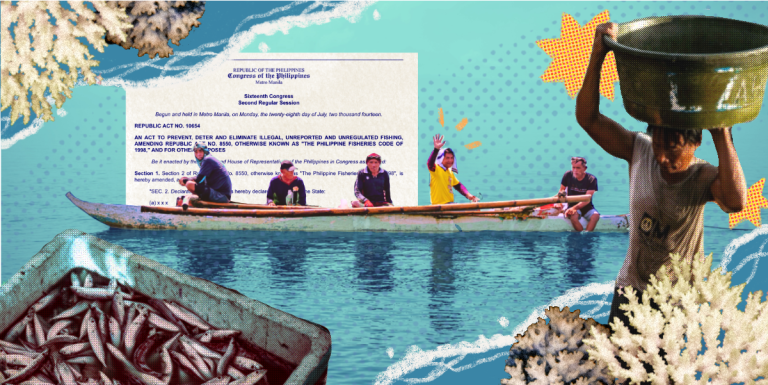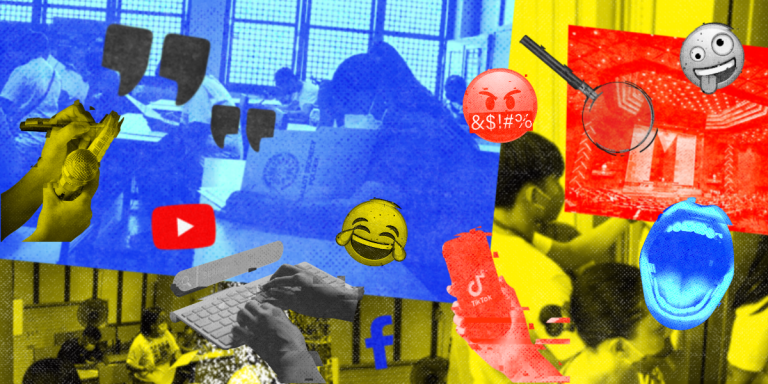Ologist sows seeds for stronger PHL science communication and research landscape
With the belief that science is for everyone, our team is on a mission to provide scientific perspectives on socially relevant issues through productions that appeal to and are easily understood by as many Filipinos as possible, including the youth and the elderly, regardless of academic background and socioeconomic status.
Our nation has a persisting science literacy problem.
In the 2022 Program for International Student Assessment results, Filipino Junior High School students ranked 79th out of 81 participating countries in science performance.
While the poor performance can be attributed to many confounding factors, and improving science literacy requires multi-sectoral efforts, the media industry has a critical role to play, synergizing with education to foster a broad interest in STEM and research as a whole.
Even as the public considers such fields as highly relevant for society, this does not always translate into pursuing education in the sciences. This phenomenon has mainly been explored in the context of the gender gap, but can also broadly be applied to the situation of underrepresented groups including Filipino researchers.
To address this, outreach efforts and science media have the potential to reshape public perception, influence human behaviors, and help dismantle the stereotypes about who can succeed and belong in STEM—making the sector more appealing and receptive to all.
Of course science outreach initiatives do exist in the country, such as the very common yet under-attended seminars. However, we must admit that such events tend to cater to and attract a primarily scientific audience. This likely stems from the persisting public perception of the sciences as off-limits—an exclusive bubble that they can’t break into.
In addition, exhibits are few and far in between, in stark contrast to the many science centers, museums, and interactive displays that more developed countries offer at affordable fees and are often geared towards the youth. Perhaps both a cause and a symptom of this relatively barren Philippine science communication landscape, few if any mainstream media outlets carry science-focused sections or have dedicated staff covering such research beats.
Digging deeper into this, we at Ologist conducted an online survey last September among hundreds of Filipinos of varied age groups and educational backgrounds from Luzon, Visayas, Mindanao, and overseas. Majority of respondents concurred that while there isn’t necessarily a lack of public-facing science media globally, there remains a discrepancy between understandable and digestible content versus those with unexplained jargon.
Around 98% of respondents agreed on the scarcity of Philippine-centric science content on social media, especially those that are accessible to audiences with non-scientific backgrounds.
Beyond formal science education, what is needed then are nontraditional ways of engaging with science for the public, not solely to grasp technical concepts, but more importantly to instill a sense of appreciation for science. From outreach to media, these initiatives can shift the image of STEM disciplines toward greater openness and inclusivity, raising awareness about research and development while encouraging participation from the general public.
Importantly, efforts to cultivate the science communication field have been established and pioneered by faculty from the University of the Philippines Los Baños’ College of Development Communication. More recently, the Department of Science and Technology also organized the Bantog Awards to recognize outstanding science media content in the country.
Still, local opportunities to communicate science are scarce, as further affirmed by a 2020 study from Filipino science communicator Kamila Navarro and her then-mentor Associate Professor Merryn McKinnon at the Australian National Centre for the Public Awareness of Science.
They found that only 52% of the surveyed Filipino science communicators and 11% of surveyed scientists had undergone formal science communication training. Strikingly, 47% of interviewed science communicators even had studies or other jobs on top of their science communication projects, suggesting that many engaged in it as a hobby or part-time endeavor rather than as a full profession.
Given that capacity-building efforts are sorely lacking, pursuing a career in science communication can seem less appealing and economically viable in the country. Even engaging in these efforts could appear insignificant or inconvenient outside of one’s primary profession, resulting in very few scientists who actively reach out to public spaces to discuss their work or involve the community in the research process.
Moreover, in recent years, science content has often only populated the headlines in times when environmental disasters and health crises are threatening communities. For instance, when typhoon Yolanda ravaged Eastern Visayas in 2014, the use of “storm surge” in reportage lacked clarity and urgency. Without an understanding of what the term meant or implied, responses from local government units and citizens were delayed or inappropriate for the nature of the looming hazard, resulting in casualties and severe losses.
Uncontextualized media coverage of scientific information was also seen in the case of Dengvaxia, a vaccine for dengue that was still being tested in clinical trials when it was distributed. This scandal unfortunately helped fuel an anti-vaxx sentiment among many Filipinos. The situation became even more dire during the COVID-19 pandemic, where communication of health protocols and decision-making over public interventions were slow, ineffective, and at times, not data-driven.
The risk of producing misleading reports is also amplified by limitations in the training and development of (science) communicators, especially when they step foot into areas beyond their expertise, much akin to tasking a sports journalist who has written extensively on football to suddenly produce an analysis on baseball which they have no prior specialized knowledge or experience in.
Just this month, for example, a local news outlet covered a research publication on marine microorganisms called Pseudo-nitszschia, stating that these were found to produce “amnesia-causing toxins”. In reality, not all Pseudo-nitszchia species secrete these substances, and the cited study only reported the discovery of the species in Luzon waters without actually detecting the presence of harmful toxins.
Indeed, despite the surge in science content in the interest of promoting public safety and well-being, it remains rather rare for the media to discuss research work done by Filipinos in-depth. The usual exception is perhaps when a major award is won, but this also biases media outlets to platform certain personalities rather than gauge the quality of the work or proactively seek out interesting stories to tell.
This problem is exacerbated as local institutions themselves typically lack dedicated publicity and research communication arms to highlight these scientific advances. Many other Filipinos, who despite limited resources are contributing novel findings to the diverse bodies of knowledge, then fly under the media radar.
The fact is Filipino scientists are doing a lot; we just don’t know about them. This is the gap Ologist endeavors to fill.
From our administered survey, nearly 80% of respondents were keen to follow Philippine-focused science news content, even if they do not come from scientific backgrounds or do not identify to be very knowledgeable in science.
Respondents also expressed interest in a variety of fields, with Earth & Environment, Society, and Technology leading the polls. They would also likely look out for content on social media platforms, especially bite-sized productions such as short videos, infographics, and slide sets.
Aligned with this, Ologist aims to release engaging and accessible Philippine-centric science stories that blend appealing multimedia pieces with critical, analytical, and data-driven approaches. While much of our content will be produced in English, due to the status of the language in both global and local science, we will also strive to release pieces in Filipino and mixed local languages.
With the belief that science is for everyone, our team is on a mission to provide scientific perspectives on socially relevant issues through productions that appeal to and are easily understood by as many Filipinos as possible, including the youth and the elderly, regardless of academic background and socioeconomic status. This is why we hope to widen our current reach, and we are actively seeking potential partners, ranging from scientists and researchers to organizations whose works focus on the Philippine context.
Together, we can shine a spotlight on Filipinos in STEM and allied fields—from graduate students and citizen scientists, to professors and industry professionals—sharing stories about the work they do, the journeys they face, and the impact they could make.
By touching on the intersectionality of science with the world and humankind, we envision to create a conducive environment for research communication and science outreach to thrive in the country, doing our part in hopefully boosting science and media literacy.
Ultimately, we are planting the seeds for and will continue to cultivate a stronger science communication landscape and overall research and development ecosystem in the Philippines.
Experience science on your wavelength through our social media pages—@OlogistPH everywhere.
You can also support our efforts by donating at ko-fi.com/ologistph.







